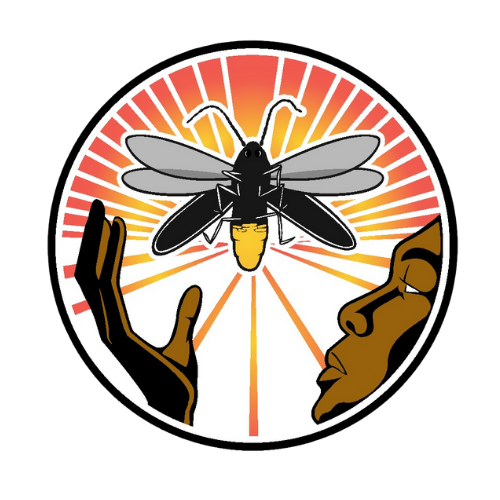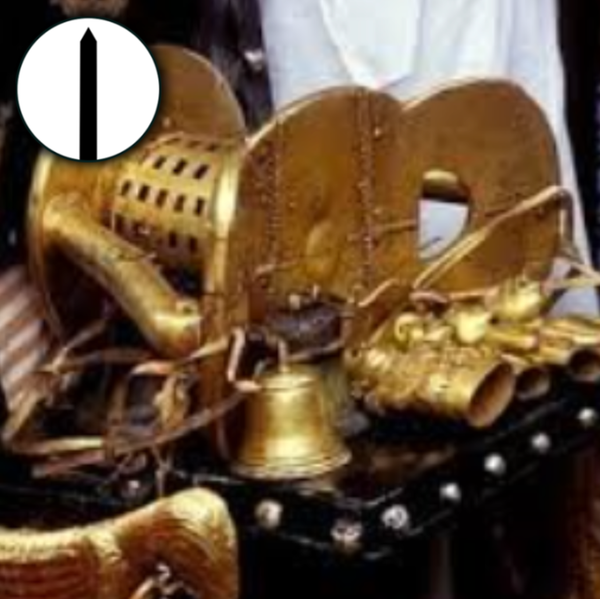SIKA DWA KOFI: GOLDEN STOOL



BENBEN | May 26, 2024 | Written By Latranei Gaibole
Every nation has symbols of its unity and strength. Most modern societies carry flags as their most important symbol of strength and power; for example, the USA flies old Red- White-And-Blue proudly as a symbol of national pride. Coupled with national anthems, animals, colors, and buildings, a nation successfully builds a sense of togetherness, pride, and accomplishment through its various symbols. The symbols of traditional political and spiritual unions do not typically follow the trends of the modern societies, nor should they: Indigenous societies and groups have (generally) been formed long before the advent of their modern counterparts, and the symbols of their union are much more culturally meaningful than a piece of fabric hanging from a metal pole.
For the Asante people of Ghana, the most precious symbol of their political unity is the Sika 'Dwa Kofi, or "Golden Stool". This stool is well-known by the rest of the world as the spiritual symbol of the Asante kingdom. It is the famous stool made of pure gold that must never touch the ground. It is the stool that is protected by all Asante people, as it is the ultimate symbol of their culture, power, unity, and loyalty to the Asantehene (Chief of the Asante). The Sika 'Dwa Kofi contains the sunsum (soul) of the nation, and no one is allowed to sit on it.
The stool came to the Asante nation by way of the Traditional Priest Okomfo Anokye. Anokye was a great priest who was renowned for his power and magic - he climbed a palm tree with sandals, carved an Oware game in a huge slab of stone with his bare fingers, dissected an ant and exposed its intestines, protected his roofless house from. rain, and gave the Asante nation a set of laws known as the "Okomfo Anokye Seventy-Seven Laws" that help guide birth, parenting, puberty rites, sex, political appointments, and death.
Anokye was a personal friend of Barima Osei Tutu, a royal of the Oyoko lineage of Kwaman (now known as Kumasi), who would later become the first Chief of the Asante nation. One day, Obiri Pon the death of his was summoned to assume leadership of the Oyoko clan. Anokye traveled with Tutu, ensuring the safety of the new Oyoko Chief. Once Tutu was the official chief, he appointed Anokye as his advisor in all matters and continued to credit Anokye with all military and diplomatic successes to the priest's magical powers.
As time passed, the need to unite all Akan people as one nation became more pressing. After Tutu defeated Denkyira, the most powerful kingdom in Ghana at the time, Okomfo Anokye invited every Asante Chief to a meeting in Kumasi (formerly known as Kwaman). The meeting, which was held on a Friday in 1701, was attended by all Akan Chiefs. During the meeting, the Chiefs agreed that the Akan people must be united. Anokye told those in the meeting that he would command a Stool from the Heavens, which would fall onto the lap of one of the Chiefs, signifying that it was his destiny to become the Chief of the new union. Every Chief agreed and vowed to support and obey the chosen leader.
Anokye delivered what he had promised: a beautiful stool made of gold fell from the sky, landing in the lap of Osei Tutu, declaring him Chief of all the Asante people. Because the stool came to the Asante Nation on a Friday, it was named Sika 'Dwa Kofi, or "Friday's Golden Stool".
Anokye declared that the Sika 'Dwa represented the well-being of all Akan people and symbolized their unity, power, and strength. Should the Sika 'Dwa ever leave the hands of the Asante nation, the Asante would lose its power and would eventually disintegrate into chaos. He also reminded the Chiefs that the occupant of the Sika "Dwa must be respected as their supreme ruler and authority.
After the creation of the Sika 'Dwa Kofi, the great priest Anokye created several lesser stools for the other Chiefs. Seven additional stools were created for Tutu's seven military guards, establishing the Atuo Nson, or "Seven Gunners".
It is a known fact that, in many places in Africa, a very spiritual person does not die a normal death, and Anokye was no exception. One day, Anokye decided to enter into the Spirit world for seven days. He told his nephew, Kwame Siaw Anim, eventual successor as Chief of Agona, of his plans, informing him that he would fall into a deep trance so that he could search for a cure for death, after which, he would regain consciousness. The nephew did not follow his uncle's instructions, however, and announced Anokye's death during this spiritual journey. Anokye's funeral was arranged, and all death rituals were started.
Meanwhile, during his funeral, Anokye revealed himself to a hunter from a nearby town. He gave the hunter a message for his nephew and the people of Kumase: he had found a cure for death, but because his instructions were not followed, he would never reveal this important knowledge! Then Anokye disappeared - he did not die - he disappeared, leaving his legacy for the Akan history.
